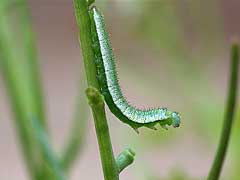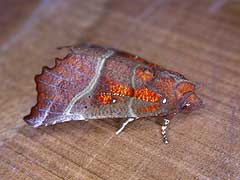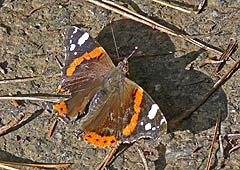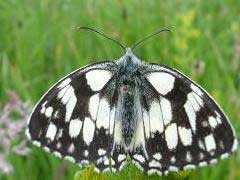|
||
|
Food for the adults This is the one we all think about - providing nectar. There are only some kinds of plants that have enough nectar held in the right shaped flower for butterflies and moths to take advantage of. And remember that different species often prefer different flowers, and some don't even need to drink nectar at all.
|
Hummingbird Hawkmoths use their long proboscis to take nectar from a small range of garden flowers, including Buddleia (Photo: Tony Wilson)
|
 |
|
Food for the caterpillars Many of our butterflies and moths are very picky about what foods they eat as a caterpillar - if you don't have the right food, there is no way that that species can breed in your garden, so you are then reliant on there being food nearby. Don't imagine it is just living plants either - some moth caterpillars feed on dead leaves, wood or even lichens.
|
Orange-tip caterpillars only feed on Lady's-smock, Garlic Mustard, or sometimes Dame's Violet or Honesty. If you haven't got these, then you can only hope to have Orange-tips as passing adults. (Photo: John Baker)
|
 |
|
Shelter There are two kinds of shelter that butterflies and moths tend to need:
|
The Herald needs a particular type of shelter - they hibernate in groups over winter, probably originally in caves or hollow trees, but now often in outbuildings.
|
 |
|
Sunshine Ok, not a big consideration for most moths, but a shady garden or aspect will seriously reduce the number of butterflies that come visiting, who rely on the sun's heat to warm themselves up. (Most moths 'shiver' themselves into action instead, but do like an ambient warm temperature, so the residue heat in a warmed-up sunny garden will almost certainly help).
|
See by its shadow how this Red Admiral angles itself perfectly into the late October sun to gain maximum heat. (Photo: John Baker) |
 |
|
Space Some of our moths and butterflies live in colonies, so, just like us and our towns, they need physical space - one small patch of habitat won't do.
Does that mean that if you only have a small garden or balcony that you can't do anything? No! Either concentrate on just luring butterflies and moths with your nectar plants, or encourage your neighbours to make butterfly habitat too.
|
Marbled Whites are colonial, breeding in extensive flower-rich grasslands. You'll need a field to get a group of these butterflies established! (Photo: Janet Richardson)
|
 |
| Copyright Butterfly Conservation © 2024 Sussex Branch |
| Privacy and Copyright Statement |
|
Butterfly Conservation Company limited by guarantee, registered in England (2206468) Registered Office: Manor Yard, East Lulworth, Wareham, Dorset, BH20 5QP Charity registered in England & Wales (254937) and in Scotland (SCO39268) |